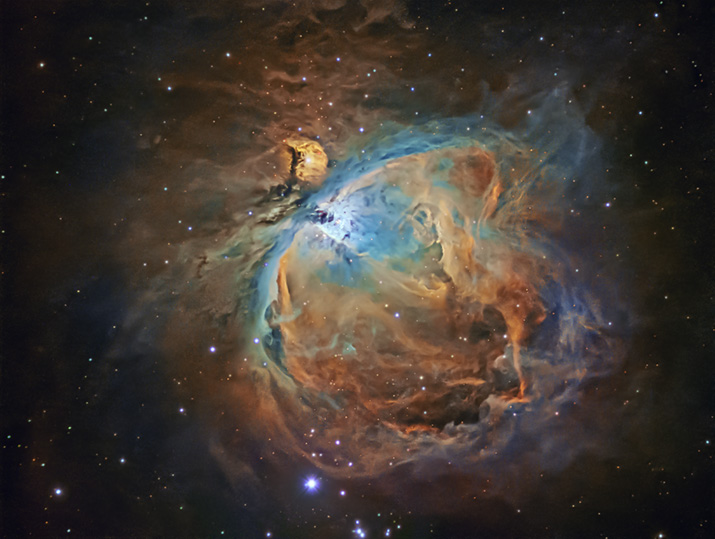
|
Image Aquaired: Dec. 02 & 03, 2018 - Location: Davis Mountains west of Fort Davis, TX Telescope: Stellarvue SV102-ED - Camera: ST-8300M Exposure: SII, Ha & OIII = 60 min. each. - RGB for stars = 15 min. each filter. Click on the image below to view at higher resolution. |

|
Discovered 1610 by Nicholas-Claude Fabri de Peiresc. Located in the constellation of Orion the Hunter at a distance of about 1,600 light years, The Great Nebula in Orion, (M42) is the brightest diffuse nebula in the sky, visible to the naked eye, and rewarding in telescopes of every size, from the smallest glasses to the greatest Earth-bound observatories and the Hubble Space Telescope. M42 is located around the second star in the "Sword of Orion" and is visible during the winter months in the Northern Hemisphere. The stars in the nebula are very young and observations from the Hubble Space Telescope have detected new stars currently being formed from the gasses of the nebula. Some of the recently formed young stars can be seen as bright spots in the clouds of gas. These stars are still partially obscured by the nebula gas. The bright central portion of the nebula is known as the Trapezium. The small nebula located just above the "body" of M42 is designated M43 and is included as a separate object in Messier's catalog, although most consider it a part of the "Great Orion Nebula". The image above was compiled from narrow band filtered exposures to create a mapped color depiction of the nebula. The standard Hubble pallet of SII mapped to red, Ha mapped to green, and OIII mapped to blue was utilized for the image. The stars were overlaid with data from a RGB filtered image. A Near True Color version of the image may be viewed here. 1http://www.messier.seds.org/m/m042.html
|